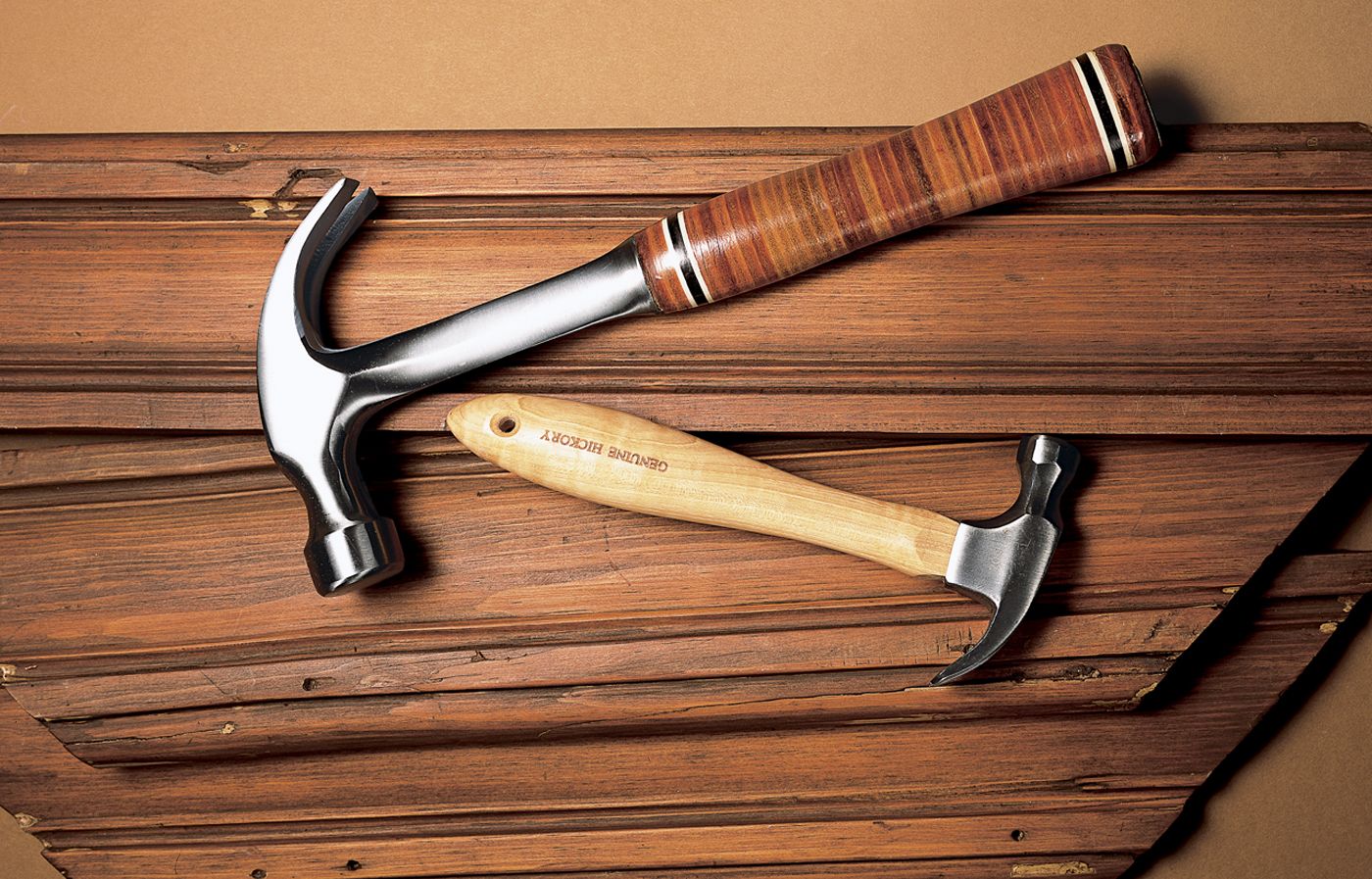The Romans were the first to hit upon this felicitous combination, and a couple of millennia later it remains an indispensable tool.
As you might expect with something this old, there are many variations on the claw hammer, but they all fall into one of two groups: finish or framing. Most homeowners can get along quite well with a trusty finish hammer, distinguished by its smooth face, light head (less than 20 ounces), short handle (less than 16 inches), and curved claw for easy nail removal.
For the more muscular work of nailing lumber, a framing (aka, rip) hammer is the way to go. It has a handle up to 18 inches long, a straight claw for prying apart pieces of wood, a head weighing 20 ounces or more, and a milled face to grip nailheads.
Classic Finish Hammers
For most tasks around the house, a finish hammer is what you need. Unlike head-heavy framing hammers, finish hammers are balanced to tap a slender nail without overstriking or bending it.
The 16-ounce Estwing, right, has a handle sheathed in lacquered leather strips (About $25, Amazon). Its diminutive 6-ounce cousin has a hickory “beaver-tail” handle that fits snugly in your palm when tapping in brads or finish nails (About $14; Lee Valley).
Anti-Vibe
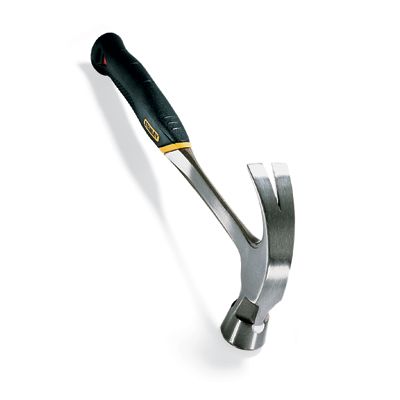
A “tuning fork” in the handle of this 20-ounce model dissipates impact shocks and vibrations, which can harm joints, muscles, and nerves even if you’re not hammering all day long. The rubber grip has a diamond-patterned texture and a “deer’s-foot” flare at the end to ensure it won’t slip out of a sweaty palm.
14-inch handle; About $40; Amazon
Long Nose
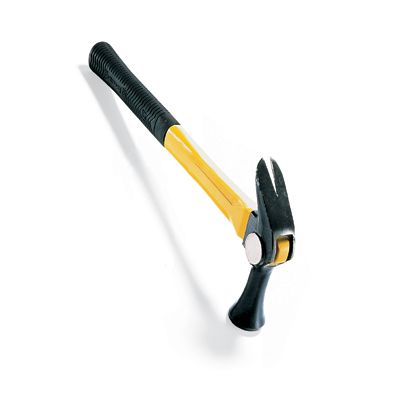
Slim and lightweight, Japanese finish hammers have a nimbleness well suited to delicate finish work. Their elongated necks keep knuckles clear of the work, and sharply pointed, steeply sloped claws extract embedded nails in one pull. Striking plates on the sides (cheeks) of this 14-ounce head can drive nails in tight quarters.
Similar to Shown: 14-inch handle; About $56; Amazon
Nail Starter
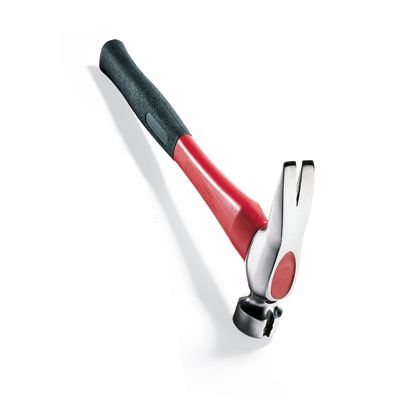
The Striker’s exquisitely sculpted 21-ounce head is permanently fastened to its fiberglass handle with epoxy resin, which resists nearly 5,000 pounds of pullout force (wood handles can withstand about 200 pounds); that means you can pound nails in and crank them out again with abandon. The groove in the head is a magnetic nail holder for one-handed nail starting.
18-inch handle (similar to shown); $45; Amazon
Two-Faced
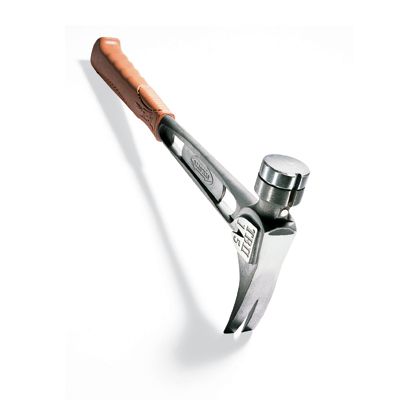
Titanium isn’t cheap, but if you’re pounding a houseful of nails, you’ll appreciate that it’s about 45 percent lighter and 10 times better at damping vibration than the high-carbon steel most hammer heads are made of. The 15-ounce TiBone II features interchangeable steel faces: one milled and one smooth.
18-inch handle; About $262; Stiletto Tools
Weight Forward
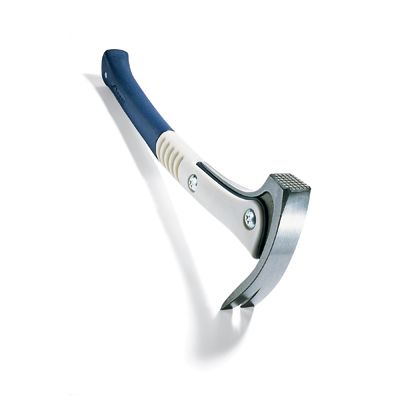
A 21-ounce steel head bolted to a lightweight fiberglass handle moves this tool’s balance point significantly closer to the business end for greater nail-striking power. The square face, for nailing in tight corners, has recessed mill marks that wear more evenly than a waffle-iron texture.
16-inch handle; About $41; Ace Hardware
Pulls Both Ways
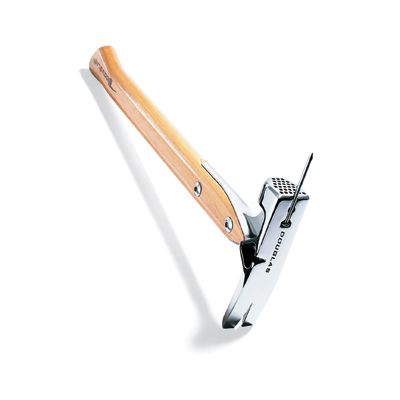
This 20—ounce hammer has a sideways nail-puller—the V-shaped notch in the head—for maximum leverage, an overstrike plate to protect the hickory handle, and a magnetic nail holder for one-handed starting. All in all, a full-featured, beautifully balanced tool for a reasonable price.
16-inch handle; About $68; Douglas Tool
One Pull or Two?
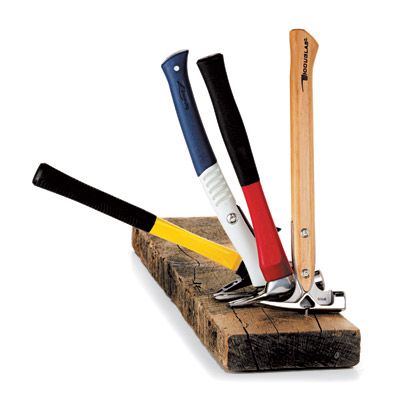
A claw that curves back sharply toward its handle (yellow handle) can pull out longer nails with one yank. Hammers with straight claws (blue/ white and red handles) are better suited for prying apart fastened lumber. Side nail pullers (hickory handle) apply the greatest leverage and help extract nails in spaces too tight for a claw to reach.
TOH Tip: Never strike the head of a hammer with another hammer. The collision can cause tiny shards of razor-sharp steel to split off and come flying at you.
Fast Fact: A pro can swing a hammer 35 feet per second
